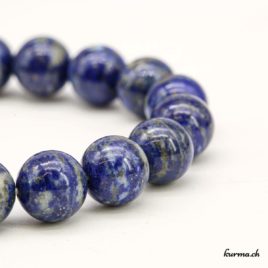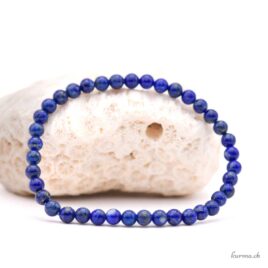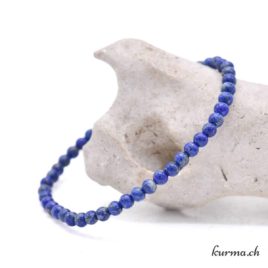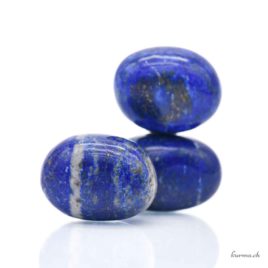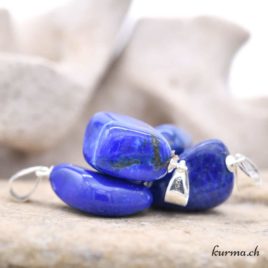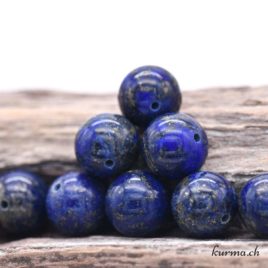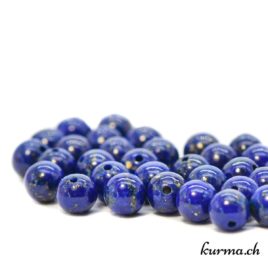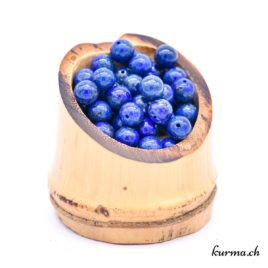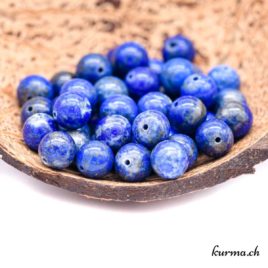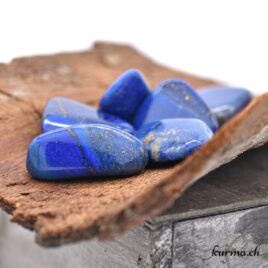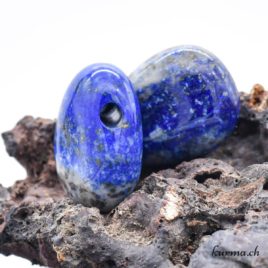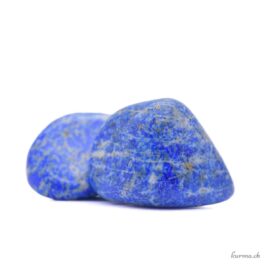Lapis lazuli
gemstones, bracelets, medallions, menhirs, pendants, clocks, beads, rolled stones
Stone of the gods, stone of power, protective talisman, starry sky, prestigious painting… Lapis lazuli has brilliantly survived the centuries and always held a prominent place in the world of arts and in that of spirituality. Its name comes from the Greek Lapis (stone) and from the Persian Azul (blue).
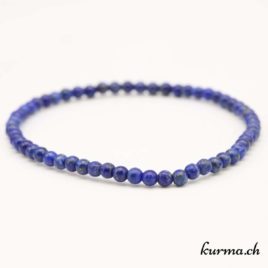

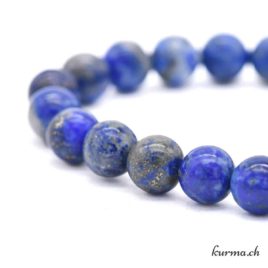

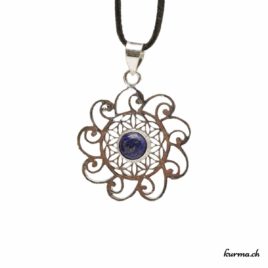

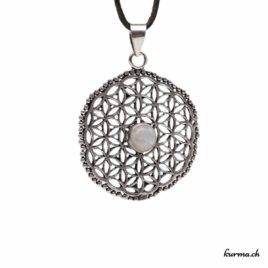
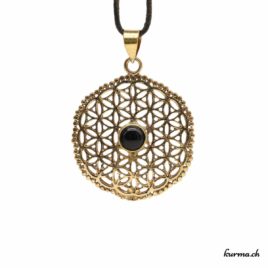

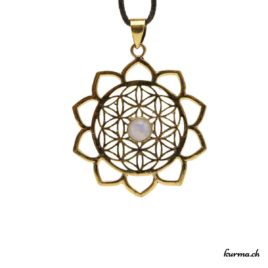

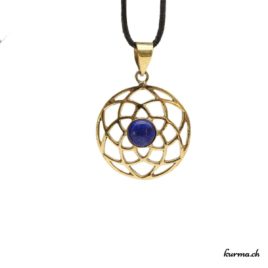

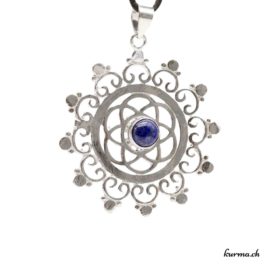

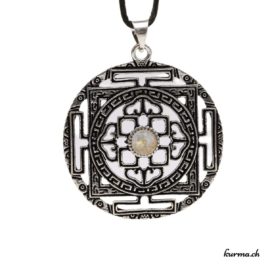
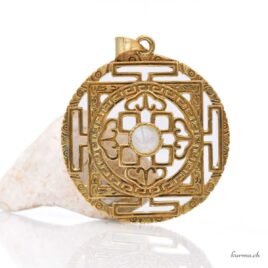

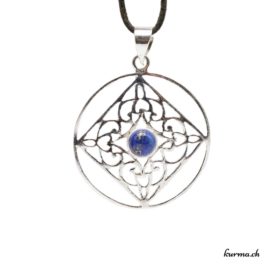

What are the properties and virtues of Lapis lazuli in lithotherapy?
Due to its metamorphic formation, Lapis Lazuli is a stone that encourages transformation. With it, you are invited to govern your mind with justice, without imposing your deceit. and lies, without letting yourself be drawn into the vicious circle of your illusions, whether they are conscious or springing from your most unknown part. With him, you are inspired to take back your own power, your creative faculties and transformative, to finally initiate the changes that are necessary to reveal yourself as queen or king of your inner kingdom.
With a Lapis Lazuli as a companion, the judgment of others does not affect you . You learn to recognize your shortcomings, your needs, your limiting behaviors, your self-judgment. and everything that prevents you from being that king or queen. It teaches you to be guided by your wisdom and not by the symptoms of your injuries (competition, will to power, shyness, Calimero syndrome, greed, jealousy, etc.).
Stone of truth, it helps you show yourself as you are, without a mask, with all the beauty of your authenticity and to express everything that could never be said, in order to free this area from knots and tensions that block the circulation of energies.
A guardian stone connected to the subtle planes, Lapis Lazuli is a wonderful guide for anyone undertaking shamanic journeys, trances, or astral travel. It helps you avoid getting lost by instilling the necessary mapping for these experiences, so that disguised energies do not mislead you. It facilitates the development of clairvoyance. and teaches you to listen to your intuition.
Lapis lazuli's physical benefits
Lithotherapy tradition attributes to it the power to improve the vivacity of the mind. and to help develop creativity, ingenuity and imagination for better communication with oneself and others. Its aluminum content would make Lapis lazuli an excellent stone for improving memory, regulating the nervous system and soothe certain brain disorders.
In lithotherapy, it can be useful for all ailments of the throat, larynx or vocal cords. It could also act to help reduce tinnitus. and to lower fever.
Lithotherapy indicates it in case of skin diseases, rashes and eczema caused by excess nervousness; it could help lower blood pressure.
How to use a Lapis lazuli?
Wear this stone around your neck when you have to speak because it can improve your voice, your way of communicating. and to become a muse.
For headaches related to mental overwork, lie down with a Lapis lazuli on your forehead.
Do you have a lump in your throat? A feeling of choking or strangulation? Wear a Lapis lazuli pendant directly on this area to understand the cause of the tension and help free it.
In case of discomfort or depression , you can carry a Lapis lazuli on you to help you understand and to heal from what causes this unhappiness, to help you move forward by being an actor in your life and no longer endure your condition.
Accompany yourself with a Lapis Lazuli to guide and protect you whenever you access altered states of consciousness , for example if you engage in practices such as shamanism.
With which stones can we amplify its properties?
Here are some of the most remarkable possible associations in lithotherapy:
- You can combine it with Smoky Quartz or Black Tourmaline to stay grounded.
- sometimes already present in Lapis lazuli, Pyrite cultivates inner strength
- from the same family as Lapis lazuli and of a similar color, Sodalite will strengthen your mental clarity .
Where to place your Lapis lazuli?
In lithotherapy, the virtues of Lapis lazuli will bring spiritual energies into your living space that invite open-mindedness, justice, balance, authenticity and coherence .
Place it in your bedroom, under your pillow, or on your bedside table if you want to remember your dreams more clearly, or on your desk, to offer you beautiful creative energy while stimulating your intellectual capacities.
It is perfect in a care room or in any place where communication is important.
In a meeting room, on the desk of a teacher, boss, politician or anyone who needs to communicate information fairly and clearly.
Purifying a Lapis lazuli
To clean and recharge the stone
Moon, earth, fumigation, intention, singing bowl, wave forms, prayersChakras
5ᵉ and 6ᵉ chakras - Throat and 3ᵉ eyePersonal expression, intuition, perception, wisdom
Astrological signs
Pisces, Aquarius and Sagittariusor alternatively:
Leo, Libra, Virgo, Taurus and Gemini
Element
Air and WaterFluidity and mind connection
Mineralogy of Lapis Lazuli
Sar-e-Sang , at an altitude of 3,000m in the Afghan mountains, is the world's largest deposit of Lapis lazuli. This is where the best quality is found. Mining can only be done for 4 months a year during the summer. The second deposit (of lower quality) is located in Chile, at Flor de Los Andes at an altitude of 3,600m. Again, due to the extreme conditions, mining can only take place in summer. Lapis lazuli is also found in Russia near Lake Baikal, in Colorado, in Burma and in Canada.
Lapis lazuli is a metamorphic rock of Tertiary formation, composed of aluminum silicate containing sulfur, sodium and traces of various minerals, frequently with inclusions of Marble or Calcite (white areas) and /or Pyrite (gold inlays). Its crystal system is cubic, but crystals visible to the naked eye are very, very rare.
Lapis lazuli counterfeits are widespread, especially when it comes to the highest quality. Often, these are lower-quality lapis lazuli that have simply been dyed. There are also many imitations made from blue-tinted calcite, magnesite, or jasper, or from synthetic materials, glass, or porcelain.
The history of Lapis Lazuli
We know from archaeological excavations that lapis lazuli was already used as jewelry. and for the manufacture of art objects intended for rituals 8,000 years ago in the Indus Valley.
In the Bronze Age, Lapis lazuli was considered a precious stone and was as valuable as diamonds are today. The Sumerians built the palace of the Great Goddess under a mountain containing a large quantity of lapis lazuli. The tombs in the Royal Cemetery of Ur in Iraq contain lapis lazuli intended to guide and protect the souls of the dead.
Lapis lazuli was believed to have supernatural powers, the ability to repel evil forces and protect against the evil eye. It had a prominent place in many ceremonies and places of worship. and of power.
23 kg of raw lapis lazuli were found in the Elba Palace in Syria.
For the Hebrews, this stone symbolized heaven and the sun. Some biblical scholars believe that Moses' Ten Commandments were carved into Lapis lazuli tablets.
The Egyptians considered it the stone of the gods, a symbol of infinity. and of immortality. They placed it inside tombs to protect the soul of the deceased during its journey. It was used for the manufacture of many objects such as amulets, cult objects and sculptures. The funerary mask of Tutankhamun, discovered in 1925 in the pharaoh's tomb, is inlaid with lapis lazuli at the eyebrow level and on the eye contour. Ground into powder, it was used as eyeshadow and as pigment.
In Roman times, lapis lazuli was more valuable than gold! It came from far away, by boat, and was used to make prestigious jewelry. Stone of the goddess Venus, the Romans attributed aphrodisiac virtues to it and used it as a remedy for snake bites.
The Celts associated it with the goddess Dana and used it as an amulet or for rituals.
It was used by the Mongols in the manufacture of numerous art objects, and also for the decoration of the Taj Mahal in India.
In the Middle Ages, it was powdered and mixed with milk to cure boils and ulcers.
In Europe, from the 15th to the 19th century , Lapis lazuli was used as a pigment for painting. and particularly appreciated for its longevity and the exceptional quality of its ultramarine blue, which does not change color on contact with air and moisture, unlike Azurite pigments. It was nicknamed blue gold for its very high cost. The great painters of the Renaissance used this pigment mixed with oil. The sky on the ceiling of the Sistine Chapel and The painting "Girl with a Pearl Earring" was painted with this pigment.
In Russia, the Tsars were very fond of lapis lazuli. There were many specialized lapidaries who crafted monumental objects carved from this stone. 500 kg of lapis lazuli from Afghanistan were used to decorate the columns of St. Isaac's Cathedral in St. Petersburg.
Lithotherapy
- Element(s) :
- Zodiac(s) :
- Pisces, Sagittarius, Aquarius
- Purification :
- Singing bowl, Fumigation, Moon, Form waves, Earth
- Physics :
- Brain, Vocal cords, Throat, Nervous system, Ears, Skin
- Emotional :
- Action, Emotional hurt, Emotional deficiencies, Self-confidence, Hypersensitivity, Nervousness, Balance
- Spiritual :
- Shamanism, Clear senses, Harmony, Intuition, Subtle worlds (connection), Protection, Transformation
- Disorder(s):
- Burn-out, Depression
- Miscellaneous :
- Creativity, Protection, Travel
Mineralogy
- Hardness :
- 5.0-5.5
- Moths scale:
- 5
- Strunz classification :
- Silicate
- Crystalline system :
- Cubic
- Chemical element :
- Na, Ca, S, O, Cl, Al, Si, Fe, K, H, C, N, Be, Mg
- Line color :
- Pale blue
- Density :
- 2.4 (for inclusions, up to 2.9)
- Cleavage :
- Imperfect
- Fracture:
- Conchoidal
- Transparency :
- Opaque, rarely translucent at the edges
- Colors :
- Dark blue with gold (Pyrite) or white and yellowish (Marble) inlays
To promote clear vision
*Please note! Some minerals may be toxic and must not be licked or ingested (as such or in the form of powder, elixir or stone water) or be in prolonged contact with the skin or mucous membranes.
*The information on the stones described here are general indications based on our research and experience, and are not exhaustive.
Reproduction in whole or in part of this content is prohibited. More info


